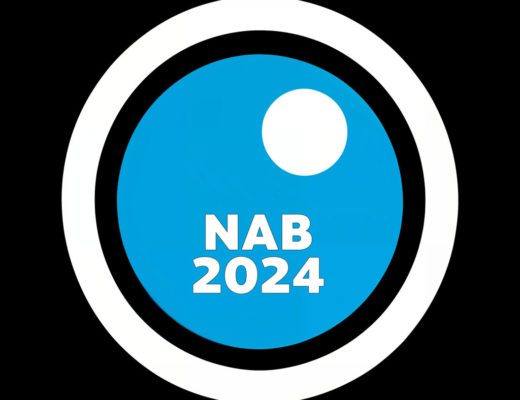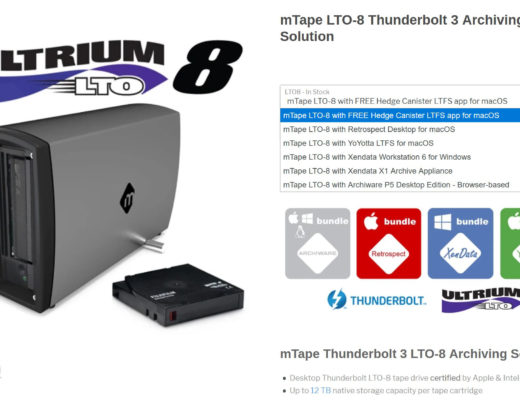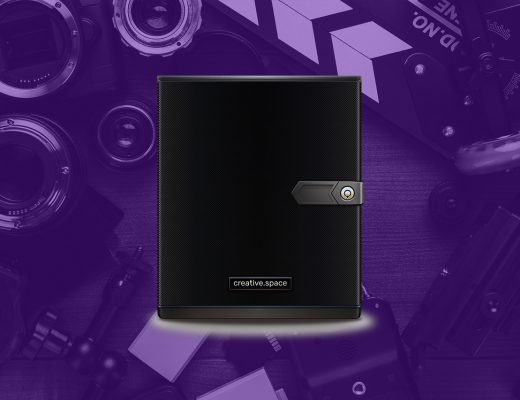
DAM Options
Reviewing the solutions for incorporating digital asset management into your workflow.
By Wendell Benedetti
While some DAM applications deal with historical documents and records, a growing number are designed to become part of a company’s real-time workflow. Images, text, video, and graphics files that would otherwise have been buried in archives are now being distributed and re-used as part of the primary workflow. This added functionality has been especially beneficial for companies that generate, store, and distribute content on a daily basis, such as motion picture studios, publishing houses, television networks, newspapers, and magazines.
To accommodate this growing use of DAM technology, software companies have developed and refined their products for real-time applications. The type of vendors and the products they produce vary widely. Some make generic solutions that are scalable. Others make specific software solutions that fit the needs of specific vertical markets.
Generic Solutions
Canto Software, Inc.’s Cumulus DAM application is a popular solution that is scalable for businesses to large corporations. Canto originally marketed Cumulus as a standalone, single-user version and as a network platform. It spun off the single-user version to MediaDex FZ LLC last summer 2005.
The latest release, version 6.6, is a cross-platform and Internet application that is easily installed yet has the power to tie together far-flung locations, providing an easily configurable approach that is based on client/server architecture. It can handle all types of digital media, but it is particularly well suited for companies that are involved in publishing, communication, and marketing.
Available as both workgroup- and enterprise-level versions, Cumulus 6.6 includes a number of new security features that protect digital assets. Of special interest to companies with non-replaceable assets is the ability to save all versions of a file. Version 6.6 also boosts security by assigning file access permission to specific users for specific catalogs. That includes check-in/check-out functionality, which lets only one person work on a file at a time. It also supports the use of FTP servers that act as central and platform independent reference points for assets. In other words, it supports browser-based access.
Cumulus 6.6 automatically supports RAW digital image files created by more than 80 digital cameras. It also includes a Pixel Image Converter that automatically resizes digital image files, without any distortion. On the server side, it is Linux, Mac OS X, Solaris, and Windows compatible. Client applications run on Macs and Windows PCs.
Carey DAM/IT, a division of CareyDigital, custom designs Canto Cumulus-based systems for photo labs, prepress shops, advertising agencies, and display houses. As a systems integrator, CareyDigital configures DAM systems that build on a company’s existing workflow needs. It also offers such services as ASP/hosting, proofing, scanning, and digital photography.
Carey-created and maintained asset collections have several benefits, including Web-based access over the Internet 24/7. As with other asset management solutions, the setup process includes acquiring and cataloging assets, converting images, and building accessible Web pages. Monthly maintenance features data back-ups and server check-ups.
Carey’s approach creates a structured workflow which supports a wide variety of assets, including image files, sounds, text, logos, layouts, presentations, and illustrations, all of which can be tracked, logged, and shared.
Now in version 8.0, Extensis Portfolio is a highly scalable application that can be configured for companies of all sizes. Portfolio is especially good at organizing, finding, and distributing brand assets. It’s a good choice for companies that have no prior experience in handling their digital assets. It ships with several sample catalogs that have been configured to give new users an idea how the total process works. One of the catalogs is configured to handle digital image assets while the other is designed to manage documents. Getting started is equally easy. The fast-cataloging feature virtually automates the process of collecting, storing, and indexing digital assets. Additional files are added to the catalogs by simply dragging-and-dropping them onto a folder on the file-server.
Portfolio 8 includes several new features, such as automatically created screen previews that can be used to create CDs, DVDs, Web sites, and emails. It also supports private image galleries that are accessible only by the gallery creator and scratchpad galleries, which are used to assemble images from a variety of different locations. Portfolio 8 is available as a standalone client/server solution or for larger environments using NetPublish and SQL connect modules. The NetPublish plug-in is used to create dynamic searchable Web sites.
Proprietary Solutions
ClearStory Systems, Inc.’s software takes a more all-encompassing approach. Its recently released version 7.0 of ActiveMedia is designed for mid-size to enterprise level companies, including Nintendo, Scripps Networks, and Sony Pictures Entertainment.
Like other high-end DAM applications, ActiveMedia takes a two-pronged approach. As a completely Web-based application, it takes advantage of client-side browsers. The server side builds on the company’s award winning Enterprise Media Server (EMS) platform, which supports scalability for companies that have multiple locations. ClearStory’s ActiveMedia EMS platform is available as a hosted solution or as an installed application.
ActiveMedia 7.0 is an ideal solution for companies that want to convert, store, and archive large volumes of historical documents and images. It does this by simplifying the process of adding metadata to historical assets. ActiveMedia automates the process of metadata creation during capture, and it can be configured to keep it updated, using user configurable rules.
One example of an ActiveMedia installation is found at Harvard Business School. Designed so that faculty can create video libraries, it lets students from around the world access those libraries and search content for spoken words or phrases. It also gives the faculty access to the same video libraries for use in the classroom. In other words, the entire video collection is available 24/7 to faculty, students, and alumni, no matter where they are located.
Digital Technology International also markets DAM software that’s specifically configured for newspapers. Its software is divided into three suites: NewsSpeed for editorial content and images, AdSpeed for the distribution of advertising, and WebSpeed, which makes video content available online. The latest versions have been upgraded to improve throughput while making the user interface easier to setup. They also include improved page and story tracking and advanced internal communication.
Interwoven, Inc.’s MediaBin software is another solution that’s well suited for very large companies. Currently used by General Mills, Reebok, Thomas Kinkade, and Walt Disney International, it’s designed for speed, and efficient in enterprise-level environments. As with other solutions, it also includes tools that create, store, search out, re-purpose, and distribute digital assets. MediaBin, however, uses centralized controls that guarantee that the latest content. When used with the company’s Web content management, it gives users a complete Web publishing system to drive their marketing.
MediaBin technology incorporates the MediaBin Asset Server 4.5 and Macintosh OS X client. That includes many of the advanced capabilities of the Mac, such as the ability to drag-and-drop more than one asset at a time using hot folders and the Mac’s browser technology. For larger companies, where multiple sites are involved, the MediaBin Syndication Manager connects MediaBin workgroup servers.
MediaBin can work with a number of different digital image file formats, including PNG, GIF, JPEG, TIFF, TGA, EPS, among others, and it supports an unlimited number of metadata fields. All re-purposing is generated from a core image asset. It supports Adobe’s eXtensible Metadata Platform (XMP) and Unicode international character sets. Sophisticated searches can be run using image content, similarity, metadata, or a combination of all three methods. Another handy feature is the ability to generate custom Microsoft PowerPoint presentations from existing PowerPoint files.
MerlinOne, Inc. also markets an application that’s designed for large companies that have multiple locations and workgroups. It, however, is specifically geared for publishing and graphics companies. Its clients include Corbis, MSNBC, The New York Times, Time, and The Washington Post.
Merlin, like other high-end DAM solutions, differs from the more generic software packages that provide a one-size-fits-all scalable approach. Because it must be configured to a company’s specific workflows and assets, the software, by necessity has a strong flavor of the intended application. Also a browser-based approach, Merlin combines the flexibility of the MS Server Sequal (SQL) database with a powerful search engine that’s designed for speed. Merlin client software runs on both Macs and PCs using a drag-and-drop file management.
Although the company goes out of its way to define the application as not being generic, Merlin is configurable, flexible, and extensible. It supports all the industry standard graphics and text file formats, including steaming media and QuickTime files.
Some of its more interesting features are the ability to automatically fill in any missing metadata categories during capture. Merlin can be set up to scan news feeds for specific wire photos and to keep track of and protect the company’s image files using watermarks. It supports the real-time editing of metadata and searches using keywords, full text, wildcards, wordstemming, and proximity. Of special interest to newspapers and magazines is its ability to send out electronic tear sheets to advertisers.
MetaCommunications classifies its Digital Storage Manager as the first Intranet search and archive management system for creative workgroups. It was designed to improve the ability of users to find, tag, and archive files. Built on MetaCommunications’ award-winning Virtual Ticket product, Digital Storage Manager enables users to quickly search across their entire network of both online servers and offline repositories to accurately find any file. A centralized view in Explorer provides users a look at the entire network’s online and offline production files. Customizable file tickets allow administrators to create custom metadata forms with design elements, fields, controls, and scripts. Digital Storage Manager features also a built-in archive and retrieval workflow, supporting both centralized and decentralized archiving workflows. The system works in conjunction with standard desktop publishing tools and the Mac OS X Finder. Previous versions of output and project concepts can be housed in a searchable repository and made available for future projects.
One MetaCommunications customer, commercial printer TruArt Color Graphics provide both sheet fed and web printing along with full electronic prepress services. TruArt has been using MetaCommunications Virtual Ticket and Job Manager software packages for DAM, electronic job ticketing, data collecting, job tracking, and costing. Prior to implementing Virtual Ticket, TruArt’s asset management system was entirely paper-based. As with many commercial printers before the advent of electronic tracking and ticketing, finding old images and job information often amounted to wasted time searching for documents. Employees now simply drag the files from where they are located on the network directly into Virtual Ticket. This instantly associates the files with the job and the customer they are being produced for. Files can also be dragged from one job to another, allowing Virtual Ticket to instantly repurpose the file.
Open Text Corporation’s Artesia Digital Asset Management is a good example of a system that’s designed for very large-scale environments. As the world’s largest provider of enterprise content management software, Open Text offers a system that works very well with rich media content. It supports a wide variety of output options, from print, to broadcast television, to the Web, to slide presentations, and handheld devices. Among its numerous fortune 500 clients are Coors, General Motors, HBO, McGraw Hill, Sony, and Target.
Artesia DAM works within a company’s creative workflow. It gives users the tools they need to find, access, edit, share, reuse, distribute, and archive digital content without disrupting the progress of their work. Using Mac- and PC-based clients, it supports standard browser-based as well as the automated uploading of large content volumes. As part of the process, it automatically reads and indexes data assets while providing sophisticated searches that use keywords, content, and metadata. Artesia DAM includes tools that convert assets of one type to another, such as digital image files, and it can be used by groups that are located at multiple locations.
The actual software includes a Web client, and the company’s J2EE middleware layer services client requests. Also included is very secure database and storage software that supports all the high-end network storage configurations, such as storage attached networks and network attached storage, among others. Its component-based approach lets companies reuse assets for additional applications and mediums.
Saepio Technologies, Inc.’s Asset Management system features extraordinary indexing and search capabilities that allow users to catalog any digital asset. This solution lets corporations and their local marketers easily store and access an entire library of digital images and graphic elements to create sales pieces. Features include the ability to search, browse, order, upload, and download any image or collection of images in the system. Most importantly, this solution is designed to work as a seamless, tightly-integrated component of the entire Saepio Agilis Marketing Suite, which includes an Agilis Print software tool to develop marketing collateral using a Web browser. All user profiles, reports, and other company assets come out of one solution, which can be managed by the company’s internal graphics team, by the firm’s ad agency, or outsourced to Saepio or another partner. One corporate client, Omni Hotels uses the Saepio Asset Management solution as part of the entire Agilis Marketing Suite to store a host of photographs and logos. This allows Omni’s individual hotels to access key image assets and templates developed by Saepio, and develop them into newspaper ads, posters, and direct-mail pieces.
Summary
When configured properly and implemented effectively, digital asset management software can extend a company’s workflow, while providing the ability to re-purpose assets for additional profits. Carefully assess the needs of your organization, current workflow, and systems to define the proper tool for capturing and managing your assets.

Filmtools
Filmmakers go-to destination for pre-production, production & post production equipment!
Shop Now













